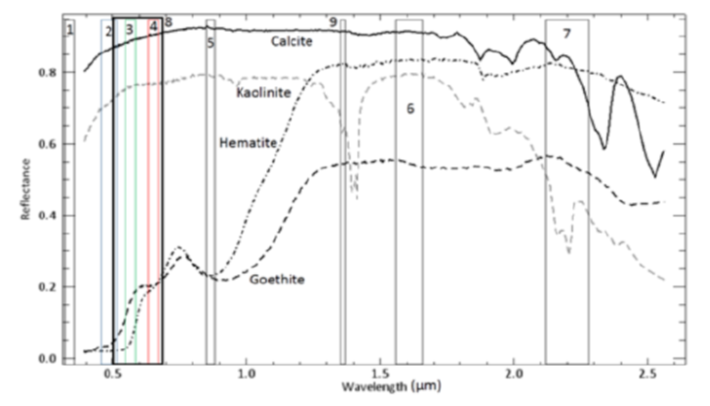


Indian Journal of Science and Technology
Year: 2021, Volume: 14, Issue: 4, Pages: 361-372
Original Article
K N Kusuma1*, H Lakshmi Ram Prasath2
1Assistant Professor, Department of Earth Sciences, Pondicherry University, Puducherry, 605014, India. Tel.: +91-413-2654-918
2Department of Earth Sciences, Pondicherry University, Puducherry, 605014, India
*Corresponding Author
Tel: +91-413-2654-918
Email: [email protected]
Received Date:25 September 2020, Accepted Date:12 January 2021, Published Date:02 February 2021
Objectives: To map the kimberlite pipes emplaced in parts of Anantpur District, India using Landsat-8 OLI multispectral data. Kimberlite are considered as the primary host of natural diamond. Kimberlite pipes have very limited exposure and are altered, therefore the indirect surface indicators associated with kimberlite such as ferric iron bearing minerals (hematite, goethite), hydroxyl (clay) and carbonate (calcrete) minerals, were mapped to trace kimberlite pipe. Methods: Feature based Principal Component Analysis (FPCA) was applied over the OLI bands 2, 4, 5 and 6, and 2, 5, 6 and 7 to generate ferric iron (F image) and hydroxyl/carbonate image (H/C images). The color composite was generated by assigning RGB colours to F, H/C and F+H/C images. Findings: When matched with the pre-explored kimberlite pipe locations, it was observed that the kimberlitic pipes display different colours in the above colour composite. Hence, the Isodata clustering was carried out to segregate the classes, which resulted in 12 unique classes. Of these, the kimberlite pipes fall in 4 classes. However, due to the moderate resolution of OLI, false positive areas were also noted. Further the target area was found to be reduced by incorporating the structural control (lineament) over the emplacement of Kimberlite pipes. Novelty: The present work highlights the usefulness of the moderate resolution multispectral image in mapping the Kimberlite pipes in semiarid region, in absence of a hyperspectral sensor.
Keywords: Kimberlite; Landsat8 OLI; feature based Principal Component Analysis (FPCA); Lineaments; Dharwar Craton
© 2021 Kusuma & Lakshmi Ram Prasath.This is an open access article distributed under the terms of the Creative Commons Attribution License, which permits unrestricted use, distribution, and reproduction in any medium, provided the original author and source are credited. Published By Indian Society for Education and Environment (iSee)
Subscribe now for latest articles and news.